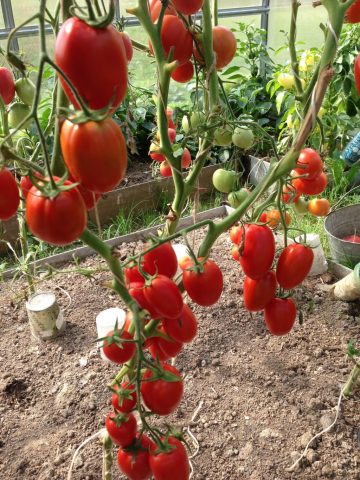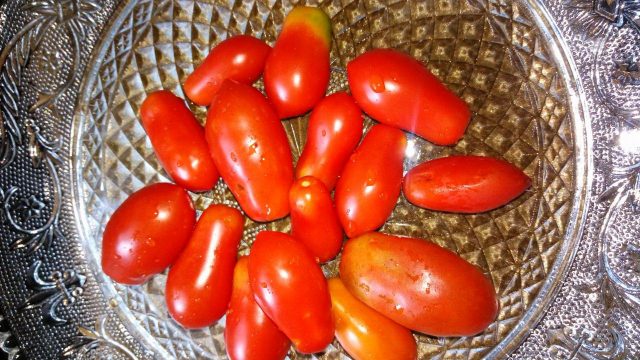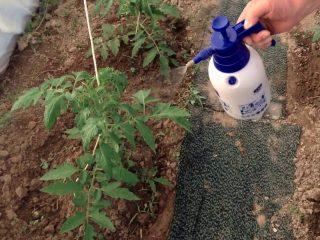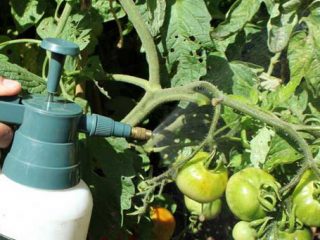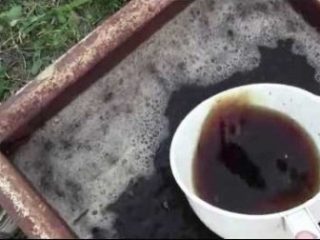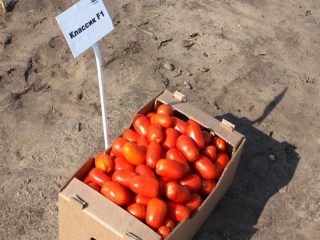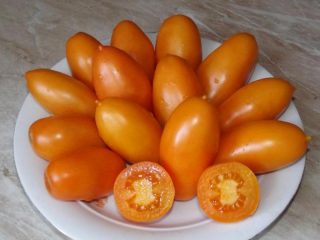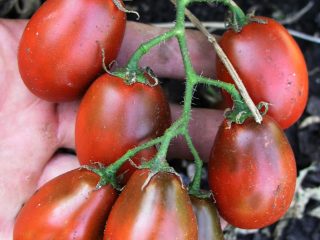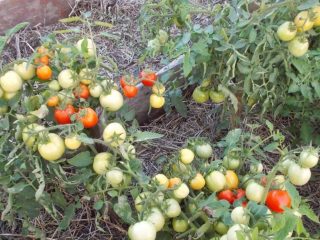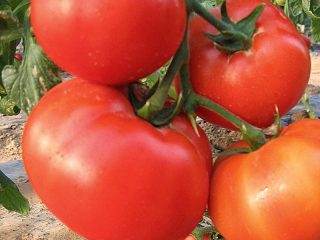Content
The pickling delicacy tomato was bred in 2000 by Siberian breeders. A few years after breeding, the hybrid was entered into the State Register (today this variety is not listed there). This tomato variety is excellent for growing in open ground and in greenhouse conditions. Thanks to its unpretentiousness, it can be grown throughout Russia. Gardeners fell in love with the Salting Delicacy tomato variety for its many advantages.
Characteristics and description of the tomato variety Pickling delicacy
Pickling delicacy tomatoes are mid-season determinate varieties. Initially, this tomato variety was intended for growing in seedlings in open ground. Tomato variety Pickling delicacy is classified as a standard form. A distinctive feature is the thick, straight stem. It is worth noting that the culture is small. The bushes can reach a height of up to 1 m.
Due to the fact that the skin of the tomato is quite dense and contains a large amount of dry substances, the fruits of the Pickling Delicacy variety are excellent for canning.When in contact with boiling water, they do not crack, while maintaining density and richness of taste.
Description of fruits
Ripe tomatoes of the Pickling Delicacy variety resemble a plum in shape and are medium in size. The color of tomatoes varies from pink to deep red. Each bunch contains 5 to 8 tomatoes. The average weight of a ripe fruit is 80-100 g.
It is worth noting that the seed chambers are evenly spaced; there are 4 of them in each tomato. Ripe fruits are perfectly stored for a long time at home; in addition, they can be transported over long distances without losing their presentation and taste.
Productivity, fruiting
According to the description and reviews, the pickling delicacy tomato ripens after planting in open ground, after 95-100 days. If you follow all the recommendations for planting and further care, the yield level will be quite high. By complying with all agrotechnical standards, it is possible to collect up to 3.5 kg of ripe fruits from each tomato bush. A distinctive feature of tomatoes of this variety is a high level of resistance to many types of diseases and pests.
Variety resistance
It is important to note that the pickling delicacy tomato variety has a high level of resistance to many types of diseases characteristic of this crop. Despite this, it is worth considering that at the time of fruiting there is a possibility of late blight. To prevent this disease, it is recommended to disinfect the seeds before planting, and subsequently treat the seedlings with preparations that contain copper. For these purposes, Bordeaux mixture or the preparation “Hom” are suitable.
Advantages and disadvantages
According to reviews and photos, Pickling delicacy tomatoes have a significant drawback - a low level of resistance to late blight. It is worth noting that this variety of tomato is practically not susceptible to other diseases. In addition, due to high humidity levels, fungus may appear. During drought, the yield level decreases significantly; in addition, there is a high probability of crop death.
Among the advantages it is worth noting the following points:
- ripe fruits have the same shape;
- the pulp and skin are quite dense;
- excellent taste;
- the ability to transport tomatoes over long distances without losing their presentation;
- long shelf life at home.
It is these advantages that become the main ones when deciding to purchase tomatoes of the Pickling Delicacy variety. What makes tomatoes unforgettable is their attractive appearance and high taste.
Rules for planting and care
It is worth noting that this variety of tomato is recommended to be grown in seedlings. Seeds are sowed 60-65 days before the expected time of planting seedlings in open ground or a greenhouse. As a rule, in the first half of May you can plant planting material in a greenhouse, and in the first half of June - in open ground.
Experts recommend following these tips when growing seedlings:
- tomato bushes of this variety do not need shaping;
- Opinions differ regarding stepsoning.Some gardeners believe that all shoots up to the first brush should be torn off, while others advise not to do this at all;
- After the planting material is planted in a permanent place of growth, it is recommended to tie up the bushes.
For every sq. m it is allowed to plant up to 4 bushes.
Growing seedlings
Tomato variety Pickling delicacy can be grown both in open ground and in a greenhouse. Traditionally, tomatoes are planted through seedlings. As a rule, seeds are planted in the second half of March.
For seedlings, it is recommended to pre-prepare nutrient soil. For these purposes use:
- leaf turf - 2 parts;
- compost – 1 part;
- wood ash - 1 tbsp.;
- sand - 1 part.
In addition, you must adhere to the following recommendations when planting seeds:
- the depth of planting seeds should not exceed 1.5 cm;
- the container is covered with film until the first shoots appear;
- Use settled water for irrigation;
- the temperature should be +22°С… +24°С;
- Picking is done after 2-3 leaves have appeared.
Many experienced gardeners recommend adding 30 g of superphosphate and 15 g of potassium sulfate for every 10 kg of nutrient soil.
Transplanting seedlings
Judging by the description and photo, the Pickling Delicacy tomato is not much different from other tomato varieties in terms of the time frame for planting seedlings in open ground or a greenhouse. It is recommended to adhere to the following timing for planting planting material:
- seeds must be sown on March 10-11;
- Seedlings can be planted in open ground on June 10;
- If the planting material is planted in a greenhouse or greenhouse, then work can begin on May 10th.
It is important to consider that seedlings should be grown in 2 stems. Stepping is carried out up to the first hand. The stems must be tied to supports, since, despite the power of the bush, there is a high probability that it will break under the weight of ripe fruits.
Aftercare
Tomatoes must be watered 10 days after transplanting into open ground. Irrigation of the soil should be done once every 7 days. Watering must be moderate, at the root level; warm water is used for these purposes. As a rule, you need to water tomatoes in the evening.
Weeding should be regular. It is important to understand that weeds take all the nutrients that are necessary for the full growth of the crop. Mulching the soil retains moisture much longer.
Throughout the season, fertilizers are applied about 3-4 times. For this purpose, mineral fertilizers or complex fertilizers are used. Fertilizing is carried out simultaneously with watering.
Conclusion
The pickling delicacy tomato is an unpretentious variety that is loved by many gardeners for its excellent taste and attractive appearance. With proper care you can get a good harvest. Due to their versatility, the fruits can be eaten fresh or used for canning.
